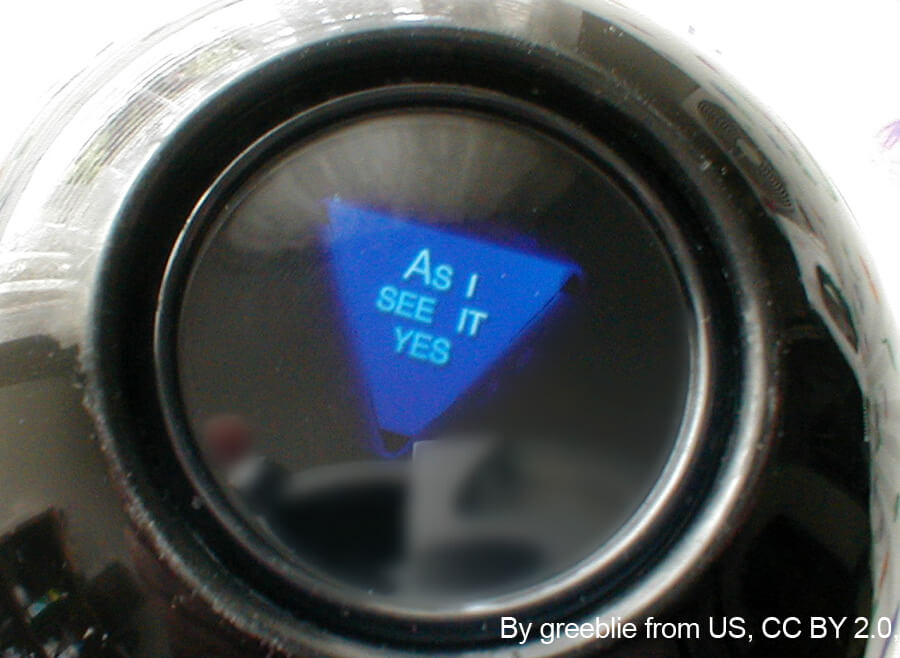It is decidedly so.
Reply hazy, try again.
Outlook not so good.
Signs point to yes.
Chances are high that you know exactly where these phrases come from. They’re just a few of the answers that generations of children (and adults) have received from America’s most famous oracle: the Magic 8 Ball.
It wasn’t originally an 8 ball, or even spherical at all. Albert C. Carter’s original invention, called the Syco-Seer, was a liquid-filled tube with clear windows in each end to reveal phrases inscribed on two dice inside. Carter based the Syco-Seer on the Psycho-Slate, a device that his mother, a popular clairvoyant, invented to allow spirits to more easily speak with the living.
Carter, along with his partners Max Levinson and Abe Bookman, first launched the Syco-Seer “Miracle Home Fortune Teller” in 1946. After Carter’s mysterious death in the late 1940s, the fortune-telling device went through two more iterations — first a slimmer pocket-sized tube, and then a flashy crystal ball that failed to rustle up more sales.
The spirits finally came through for Abe Bookman in 1950 when Brunswick Billiards, a Chicago-based billiards company, started looking for a memorable item to use as a giveaway. Bookman redesigned the Syco-Seer again and replaced the failed crystal ball with a billiards-inspired 8 ball. The giveaway was a success for Brunswick, and after the contract ended, Bookman kept the design, marketing the Magic 8 ball as a paperweight for adults before he finally struck gold with the toy market.
Today, the toy giant Mattel owns the Magic 8 Ball, widely considered one of the greatest toys of all time, and reports sales of more than a million units each year. Want to verify Mattel’s claim? Just ask the spirits.
